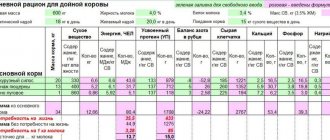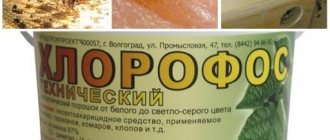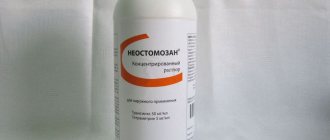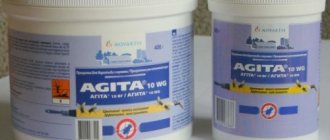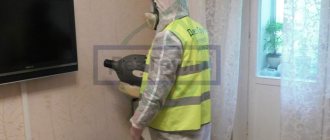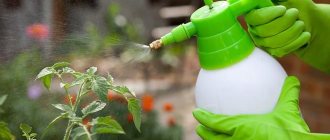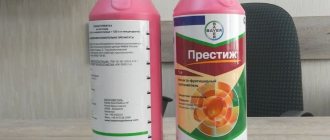According to SanPiN (sanitary and epidemiological rules and regulations), primary processing of eggs is carried out on food blocks. It helps to avoid unwanted poisoning of people eating in public canteens and cafes. Protect them from salmonella, which sometimes coats eggshells. And also to identify a defective product at the enterprise. Processing is carried out according to certain requirements, a full description of which is given in the article.
Safety precautions
The product is processed according to SanPiN rules, during which various disinfectants are used: Nika, Triosept and others.
Food service workers must take precautions.
Work with disinfectant carefully. Make sure that it does not come into contact with bare skin or eyes.
The employee must wear special clothing issued by the organization. Protect your hands with thick rubber gloves.
The organization must have a stocked first aid kit.
Persons over 18 years of age who do not have an allergic reaction to the substances used are allowed to process.
The employee is given safety training. They talk about the rules of first aid in the workplace.
Mechanical cooking of eggs is a technological procedure that requires precision and accuracy. The slightest mistake makes the product harmful to human health.
Today, special equipment can be used for disinfection.
Features of the new sanitary rules
The new requirements for catering are based on several key principles.
Taking into account various factors
SanPiN prescribes requirements taking into account biological, chemical, physical and other factors.
Biological factors include microbiological and parasitic contamination, the proliferation of pathogenic microorganisms. To prevent these risks, employees must comply with a number of requirements and adhere to strict rules when organizing their work process.
In particular, they are required to report cases of intestinal infections in their relatives with whom they live. Employees must also use disposable gloves when preparing cold appetizers and salads. If the integrity of the gloves is compromised, they should be replaced with new ones.
To eliminate biological factors, you need to adhere to the rules when distributing and selling food. For example, ready-made meals that require heating before consumption should not be served for more than three hours from the moment of production. Prepared meals cannot be frozen and sold the next day.
Sauces for dishes are served in individual consumer packaging.
Chemical factors include pollution with toxic substances. To prevent them from getting into products, detergents and disinfectants must be used according to instructions and stored in special places.
Caterers are not allowed to use mercury thermometers.
Physical factors include thermal effects. The rules state that the temperature of hot dishes, cold soups, and drinks sold through distribution must comply with technological documents.
Presumption of good faith
The new rules are based on HACCP principles. This abbreviation translates from English as hazard analysis and critical control points.
Catering enterprises are given the opportunity to independently control their activities. But they need to implement the HACCP system (developed for a specific enterprise) and write down all the instructions and requirements. Ignoring this condition may result in fines under Art. 14.43 Code of Administrative Offences.
Advantages of machining
The use of an automatic apparatus for processing eggs in a catering unit greatly simplifies the technological process. Among the advantages:
- disinfection of the product is accelerated;
- error (human factor) is excluded;
- high quality of the procedure performed;
- the possibility of poisoning of catering staff is minimized.
The equipment is easy to use and does not require special skills from personnel.
Advantages of new sanitary rules for small businesses
The new SanPiN softens some requirements for small establishments that are not designed for high flows of visitors. The defining feature in this case is the number of seats. If you have less than 25, then you can count on relaxations.
- One toilet is allowed for visitors and staff. But at the same time, its entrance must be isolated from production and storage facilities.
- It is possible to store raw and finished products in one refrigerator. But there is a condition: it must be in closed containers.
The requirement to hire separate personnel to clean the toilet has disappeared from the new rules, which is important for micro-businesses for which an extra employee entails additional expenses. This duty can be performed by other employees, the main thing is to comply with safety standards.
Requirements for work organization
In SP 2.3.6.1079-01. 2.3.6. requirements for organizing the work of public catering establishments have been collected. They operate in Moscow and other cities of the country.
All employees must be familiar with the sample rules. According to the document, sanitary processing of eggs is carried out in marked containers. The latter are specially allocated for this process. It is important to follow the sequence of operations.
Each product arriving at the catering department that has a short shelf life is recorded in the raw product rejection log (Appendix No. 5 to SanPiN 2.4.1.3049-13).
In it, employees note the date of receipt, the name of the product (in our case, raw eggs), its quantity, invoice details, storage conditions, date and time of its use, and the signature of the person in charge.
The document is maintained in order to track the timely use of the product in the kitchen. Eggs should not be stored in the refrigerator for more than a week. The facts of write-off are taken into account in the “Note” column.
Disinfectants
Public catering points are required to process egg products in accordance with the standards and comply with the concentration of the substance. Eggs are cleaned with drugs that include helminths. He disinfects products.
The table shows the concentration of the product and the disinfection scheme:
| Group | Quantity, pcs. | Degree of pollution | Product concentration | Washing and disinfection | Extension of storage period | С° |
| 1 | 150 | Clean | — | — | 7 | 12-13 |
| 2 | 150 | — | — | 1 | — | |
| 3 | 150 | 1/8 | DM LED 0.5% | DM LED | 7 | 12-13 |
| 4 | 150 | 1/8 | 1 | — |
Hygienic processing extends the shelf life of the product. The concentration of the drugs is approved by SanPiN.
Egg processing according to SanPiN
Start
Unprocessed testicles are stored in a special container labeled “for processing.” They cannot be left in boxes or cassettes in the production workshop.
The disinfection process itself is carried out in several steps.
Visual inspection of eggs
Its purpose is to search for defects and damage, including those hidden from view. The test is carried out in a dark room.
For this purpose, a special device is used - an ovoscope. It is a special container, inside of which lamps are installed to illuminate the eggs.
There is a grid for eggs on the drum, where they are laid out. Using directed beams of light, darkening and other defects are looked for on them. The defect is immediately deleted and recorded in the journal.
Soak
A warm solution of soda ash at a concentration of 1-2% is poured into a marked enamel container. It is prepared using the formula: 200 g of soda per 10 liters of water.
Soaking takes 10-15 minutes. The dirt should be completely removed from the egg. The solution is changed as it gets dirty.
Disinfection
The testicles are transferred to another marked container, where there is a different solution. Here the water is diluted with a disinfectant. It must be approved for use for these purposes.
The name and dosage of disinfectants will be indicated below. Leave the product in the solution for 15 minutes. A fresh solution is made for each batch of eggs.
Rinsing
The processed eggs are transferred to a perforated container with holes for draining water.
Eggshells are washed from the disinfectant solution under running water. Its temperature ranges from 40-55°C. This is done until the product is completely washed off. But not less than 15 minutes.
Drying
The perforated eggs are transferred to a new container, on which there is the inscription “raw processed egg.” They will be stored in this container until they are sold.
After processing
All solutions in which the testicles were treated are poured out. The baths with the nets attached to them are disinfected.
At enterprises, eggs are stored at a temperature of no more than 20°C for a week. Before using them, the catering worker puts on clean overalls, washes his hands with soap and disinfects them. The log simultaneously records the consumption of chicken eggs.
Keeping a log of egg processing in catering
The process of processing eggs according to SanPiN must be accompanied by the maintenance of a special document. It is called the “Disinfection Products Logbook”.
The following organizations are required to have it:
- Sanatoriums;
- resort guesthouses;
- catering;
- educational establishments;
- preschool educational institution;
- companies that store and sell food;
- saunas and hotels.
Journal compilation
The first part is the cover. It contains information:
- About the organization and a link to the order of the State Sanitary and Epidemiological Supervision No. 167/465.
- Start and end of filling.
- Enterprise address.
- FULL NAME. those who are financially responsible for disinfectants.
- Information about the authorized person for carrying out the processing process.
- Company seal.
- Signature of the head and inspector of the State Sanitary and Epidemiological Supervision.
The second part consists of several columns in the form of a table, which contain the following data:
- Study number.
- Disinfection object.
- Room area.
- The product that was used.
- Drug consumption figure.
- Processing requirement (in days or months).
- Responsible person.
List of information for the third part:
- Record number.
- Date of receipt of the drug.
- Name of the substance.
- Ordinal code in reporting.
- Best before date.
- The amount of composition used.
- Responsible person.
It is mandatory to register the invoice on the basis of which the company received the product, as well as full information about the supplier. The fourth part is last in number, but not in importance. It describes the stages of each disinfection.
Watch the video: “Pasteurizing eggs - Grandma Emma’s Recipe”
Rospotrebnadzor checks this document at each scheduled visit to the enterprise. Organizations that are not yet three years old are exempt from maintaining this journal.
What else to read:
- Details about the classification of chicken eggs into categories according to GOST - labeling, weight without shell, raw and boiled
Disinfectants
general information
The egg treatment product must be approved for use as a disinfectant by the regional health authorities.
These drugs (for example, Nika) are versatile. In production they are used as cleaning liquids.
We present a list of disinfectants suitable for processing eggs according to SanPiN in catering.
Chloramine
The product contains ammonia derivatives. Contains 25% active chlorine. Approved for use in preschool and school institutions, medical institutions and catering establishments.
Available in the form of white or light yellow powder. For one bucket of water in 10 liters, dissolve 50 g of powder.
Economy (25M, 50M)
A disinfectant whose main active ingredient is chloride. Packages labeled “25M” contain 12.5% of it, and containers labeled “50M” contain 25%.
Used for soaking eggs at a temperature of 25-30°C in a solution with a concentration of 0.05%. To prepare it you will need 10 liters of water and 10 ml of “50M” liquid or 20 ml of “25M”.
Javelon (Novelty-chlor)
Used for food processing. The main component is the sodium salt of dichloroisocyanuric acid.
It comes in the form of tablets, each weighing 3.35. Releases 1.5 g of active chlorine in water. To prepare the working solution you will need 7 tablets per 10 liters of liquid.
Optimax
The active substance is chlorine. The liquid is clear and odorless. To prepare the solution, use 100 ml per 10 liters of water.
Eggs are soaked for 20 minutes in a solution at a temperature of 20°C. After which they can be washed under running water.
Nika-2
Available in the form of a liquid containing active chlorine. Suitable for beverage, dairy, meat and bakery industries.
Niki's solution is used at a temperature of 40-45°C. It is recommended to soak the eggs for 20-30 minutes. Use 200 ml of product per 10 liters of water.
Triosept (oxy, lux, endo)
Colorless liquid. Like Nika, it contains chlorine.
The instructions for processing eggs recommend diluting the product in a ratio of 100 ml of solution and 9900 ml of water. Soak them in a solution at a temperature of 25-30°C for 20-30 minutes.
You can familiarize yourself with the procedure for hygienic processing of eggs for kindergartens in the article “Instructions for processing eggs in a preschool educational institution (kindergarten).”
Did you like the article? Please like and repost. Comments are open to discuss the topic.
Disinfection of eggs in schools
Eggs should be processed according to SanPiN in schools using special hygiene rules. Without this cleaning procedure, cafeteria employees are prohibited from adding egg products to food.
The process takes place according to the regulations:
- The testicle is examined for damage.
- The eggs are placed in a disinfectant solution, then in a soda mixture.
- Next, the products are washed in warm water.
- At the end of the procedure, the food product is placed in a clean container.
- The last stage is drying.
The procedure is carried out in a separate room. Employees who carry out disinfection must be adults and undergo mandatory training. Labeling the containers in which the products are stored is the main condition. Overalls and rubber gloves are also an essential rule during cleaning.

